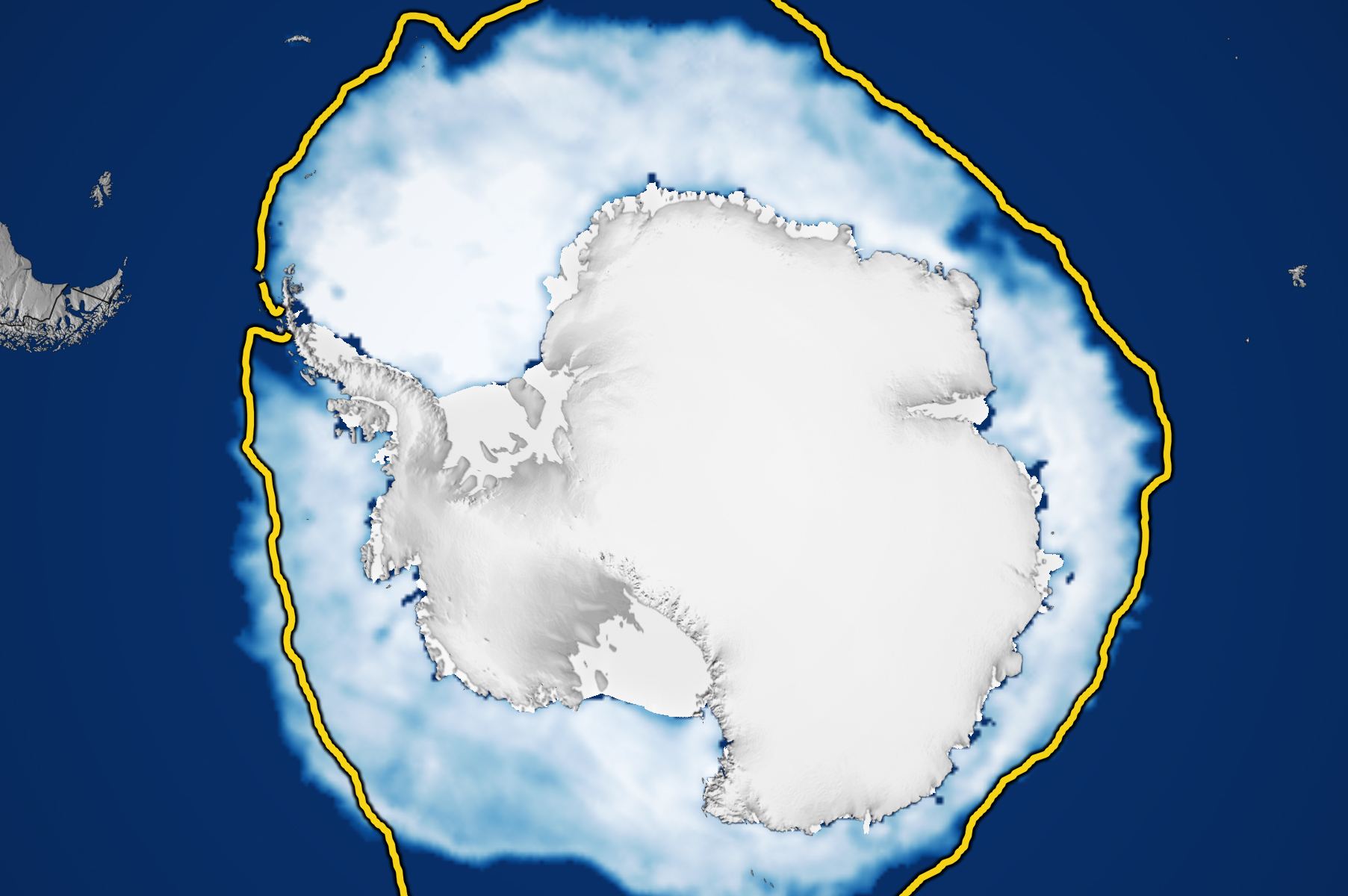While many people are living through a sweltering summer, it’s the depths of winter in Antarctica. Usually, this means there’s a lot of sea ice around the continent. Yet, this year, it’s the lowest it’s ever been. What’s happening?
NASA’s National Snow and Ice Data Center (NSIDC) satellite measurements show that through July of this year, sea ice coverage averaged only 13.5 million kilometers. That’s the lowest measurement since the center began measuring ice in 1978. Usually, Antarctic sea ice affects an area of about 15 million square kilometers. It grows and melts with the change of seasons. For winter 2023, the growth rate slowed down drastically, covering two million square kilometers less than the average. And, that’s unusual. “What we’re seeing this year is uncharted territory in the satellite record,” said Walt Meier, a scientist at NSIDC.
There’s definitely a downward trend in sea ice, and it’s not new. It’s a continuation of a slump in production that began in 2014. That year, ice growth around the continent was quite high. In fact, for a while, it had been increasing about a percent per decade. Since that time, production slowed. One of the most drastic declines took place in 2016 and things have gone downhill since then. “Most of the months since 2016 have been well below average,” Meier said.

Why Is Sea Ice Declining in Antarctica?
The cause of this shift is not yet clear. “Both the increase in Antarctic sea ice prior to 2014 and its rapid decrease since are of great interest to scientists, without a consensus point-of-view on the drivers,” said Claire Parkinson, a climate scientist at NASA’s Goddard Space Flight Center. Parkinson is an expert in using satellite observations to map sea ice extent, and in 1983 she was part of the group that published the first atlas of Antarctic sea ice from satellite data.
Interestingly, the decline seen around Antarctica between 2014 and 2017 was greater than the decline in ice seen in the Arctic. However, it’s interesting to note that northern ice fields are also being affected by something interfering with their ice fields.
Hudson’s Bay, for example, was ice-free early in 2023. Other regions in the northern hemisphere, such as the Siberian Sea, the Beaufort Sea (north of Alaska), and the Kara Sea in Russia are also losing ice cover. The popular Mendenhall Glacier near Juneau, Alaska, is definitely smaller than normal, too. In early August, a nearby glacial lake outburst tied to melting ice flooded nearby areas. Authorities linked it to warming, which has helped shrink the glacier.

Possible Explanations
The Antarctic ice problem is definitely grabbing scientists’ attention with its most drastic decline in the entire 40-year satellite record. It, along with Greenland, is losing its ice rapidly. So, what could be happening? Obviously, climate change looks like it could be a culprit. Warming temperatures associated with it affect the oceans, which could be forcing a shift toward lower ice accumulation around Antarctica. In some of her research, Parkinson cites other possible drivers for ice loss, including ties to the El Niño-Southern Oscillation (ENSO) effect, an interdecadal Pacific oscillation, or something called the Amundsen Sea low.

Just as one example, Parkinson discusses studies that focused on the extreme sea ice retreat of 2016. There’s quite a bit of evidence linking it to conditions in the local atmosphere and oceans. There was a strong northerly atmospheric flow that caused rapid ice retreat in the Weddell Sea (just above West Antarctica). Other changes induced ice loss in the Ross Sea. There was also an extreme El Niño that peaked earlier that year, which warmed the waters of the Bellinghause, Amundsen, and eastern parts of the Ross seas. Other atmospheric conditions contributed to sea ice extent that year. In short, there wasn’t just one event that affected ice growth, but a combination of several.
No Definitive Answers to Sea Ice Conundrum…Yet
Could this combo of events and effects be what’s going on in 2023? There’s no consensus yet. Some scientists have speculated that perhaps the Antarctic sea ice is starting to experience some kind of shift toward lower ice production. However, even with 40 years of data, Meier said it was too soon to tell whether there is such a shift or not. Yet, recent studies point to changing ocean conditions as a possible driver. Ocean heat may be playing a stronger role than usual. If so, it could be limiting autumn and winter ice growth and then enhancing spring and summer ice melt episodes.
For More Information
Exceptionally Low Antarctic Sea Ice
A 40-y record reveals gradual Antarctic sea ice increases followed by decreases at rates far exceeding the rates seen in the Arctic

